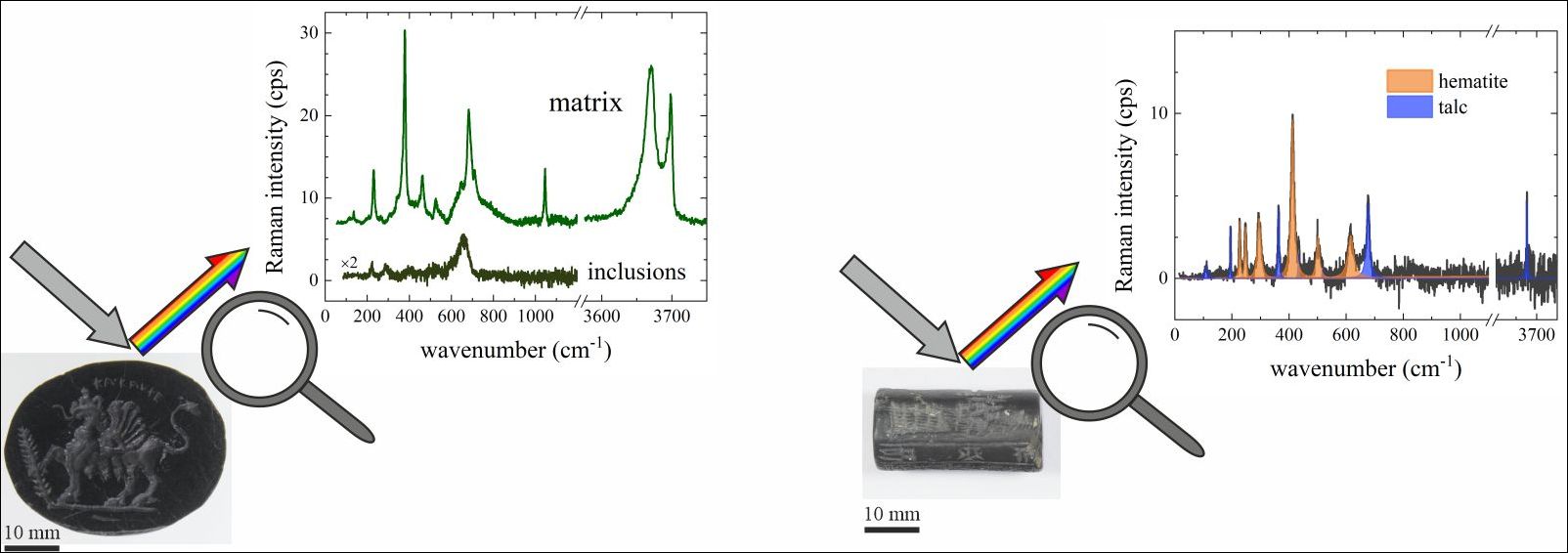Understanding Written Artefacts on Inorganic Supports at the Atomic-Scale Level
Weathering and Crystal Chemistry of the Rock-Forming Minerals
2019–2022
RFA02

Within the framework of the project following achievements have been accomplished:
- Development of a new method for non-destructive visualisation of faded inscribed texts on marble via the Raman-scattering signal of weathering-related products was developed, opening a novel route to apply techniques such as micro-spatially offset Raman spectroscopy to non-invasively map subsurface layers in marble-based writing supports.
- Establishment of a new method for non-destructive determination of the major and minor elements at all cationic sites in biotite, mica minerals that commonly present in textured marble. The approach is based on one-mode/two-mode behaviour of selected Raman peaks. Once the biotite chemical composition is non-invasively determined, it can be used as a material marker of the marble-source locality.
- Establishment of a new method for non-destructive determination of the amount of octahedrally-coordinated Fe2+ + Mn2+ in serpentine and talc: Mg-rich layered silicates, which are among the dominant mineral constituents of antient intaglios and cylindrical, seals and secondary phases in clay tablets. The quantitative relationship between the Raman scattering signals and crystallochemical composition of serpentine and talc, can be used to provide a critical material parameter in studying the provenance of portable rock-based written artefacts.
People
Project lead: Boriana Mihailova, Kaja Harter-Uibopuu, Jochen Schlüter
Research Associate: Stelios Aspiotis
